Exclusive Interview: Tetsuko Kuroyanagi, President of the Totto Foundation
Breaking Boundaries: How Sign Language Kyogen Unlocks a New World of DEI after 2024 Paris Performance
2025.6.24
【Special Feature 083】
※DEI (diversity, equity, and inclusion) is the goal of those seeking a society in which everyone has equal opportunities to thrive and contribute.
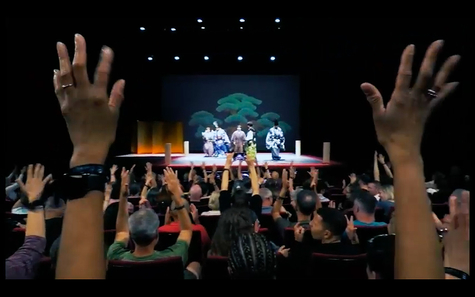
On July 6, 2024, in advance of the 2024 Paris Olympics & Paralympics and the 2025 Tokyo Deaflympics, the Japan Cultural Institute in Paris hosted a groundbreaking performance of Sign Language Kyogen. This internationally acclaimed play, presented by the Japanese Theatre of the Deaf, broke disability and nationality barriers by offering a unique opportunity for attendees to experience the expressive power of sign language and its potential for enhancing diversity and inclusion in the arts.
The project was led by Tetsuko Kuroyanagi, the visionary creator of Sign Language Kyogen and the founder of the Totto Foundation,* which supports the Japanese Theatre of the Deaf. In this interview, Kuroyanagi, kyogen actor Chikanari Miyake, and Tetsuya Izaki from the Japanese Theatre of the Deaf share their insights into the play's global impact and its role in shaping a more inclusive international stage.
*Totto Foundation: Founded with royalties from the 1981 best seller Totto-chan: The Little Girl at the Window by Tetsuko Kuroyanagi, this social-welfare organization runs the Totto Culture Center, a facility offering ongoing employment support for individuals with disabilities, and the Japanese Theatre of the Deaf, which produces performances in sign language.
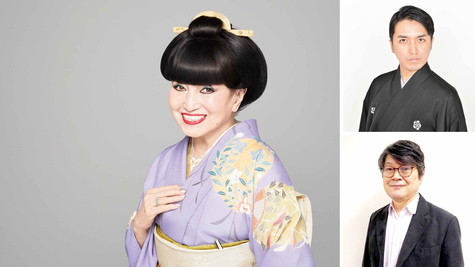
Left, Totto Foundation Chair Tetsuko Kuroyanagi (Photo courtesy of Kazuyoshi Shimomura); above right, Izumi-ryu Kyogen Performer Chikanari Miyake; below right, Tetsuya Izaki, Japanese Theatre of the Deaf
*This interview took place remotely in November 2024.
*Mr. Izaki's comments were shared through sign-language interpretation.
Bringing sign-language theater to stages across Japan, along with a deaf theater troupe from America.
Congratulations on the success of the Sign Language Kyogen performance at the Japan Cultural Institute in Paris! I heard that it was incredibly well received by the audience. Sign Language Kyogen has captivated audiences worldwide for over forty years since its debut in Palermo, Italy, in 1983. Could you please share with us what inspired you to create this unique form of stage performance, Ms. Kuroyanagi.
Kuroyanagi: This story starts even before Sign Language Kyogen was born. In the 1970s, I went to New York to study theater. While I was there, I had the chance to see a performance by a deaf theater troupe on Broadway. The actors were performing entirely in sign language, and I was deeply moved by the experience. After returning to Japan in 1979, with the support of a newspaper company, we arranged for America's National Theatre of the Deaf to tour Japan. I had the honor of performing alongside them, touring major cities across the country. Back then, sign language was still relatively unknown in Japan, but this tour helped introduce it to the public. The performance was even covered by NHK and appeared on its news program. Later, during the year-end Kohaku Uta Gassen television special, I used sign language to convey a brief message: "Today, the singers will give their best performance, so let's cheer them on." After that, sign language gained widespread recognition, leading to the establishment of educational programs and a steady growth in its acceptance.
Yes, that moment really had a huge impact, propelling the use of sign language. It was also around that time that the Totto Foundation was founded.
Kuroyanagi: After witnessing the inspiring performance of America's National Theatre of the Deaf, several young deaf-theater enthusiasts came to me excitedly proclaiming, "We want to perform in sign language too!" They rallied their friends and formed their own troupe. This sparked a strong desire in me to create a space in Japan where young deaf people could pursue their interest in theater. At the time, my book Totto-chan: The Little Girl at the Window was a best seller, so I used the royalties from that to establish the Totto Foundation in 1982. I also created the Totto Culture Center to provide a space for rehearsals, and the theater group they formed became the Japanese Theatre of the Deaf, an affiliate of the foundation. Tetsuya Izaki, who is with us today, was a central member from the beginning and continues to mentor the next generation of performers as the troupe's advisor.
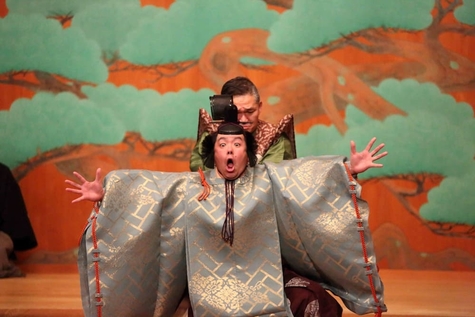
Crafting Sign Language Kyogen: A groundbreaking theater experience for deaf, hearing, and global audiences alike.
What inspired the creation of Sign Language Kyogen?
Kuroyanagi: In 1983, during a World Federation of the Deaf's conference and theatre festival in Palermo, Italy, I was asked to present a Japanese performance. After considering various options, I decided Kyogen would be perfect. Its short, fifteen-to-twenty-minute performances are ideal for a deaf audience. Since deaf people experience theater only visually, long shows can be overwhelming. I had regularly attended Kyogen performances for some time and felt its simple, relatable content would work well internationally. So I reached out to my friend, Kyogen Master Ukon Miyake, knowing he would understand the needs of deaf people. He agreed to teach me all he could in the short time available, and we succeeded in creating a Kyogen performance in sign language.
Sign Language Kyogen, a groundbreaking form of stage art, surely left audiences in awe. How was it received during its international debut performance?
Kuroyanagi: We performed "Roku Jizo," a simple yet powerful piece, in front of about two thousand people. As soon as the show ended, the hearing audience erupted in applause--but the deaf attendees responded by signing "I love you." Even though actors aren't typically meant to return to the stage, we brought them back to receive the audience's heartfelt messages.
You've been performing for over forty years, both domestically and internationally. How is Sign Language Kyogen received abroad?
Kuroyanagi: We received overwhelming praise. It was an incredible chance to introduce traditional Japanese Kyogen to audiences abroad, many of whom were experiencing it for the first time. The unique aspect of sign language--that is, deaf performers "speaking" with their hands--also had a significant impact. The hearing members of the audience enjoyed the live Kyogen performances, while the deaf attendees could understand the play through sign language. It was praised for fostering cultural exchange and communication on all levels. In recognition of our creation of a completely new form of theater, we were presented with the Agency for Cultural Affairs National Arts Festival Award in 1987.
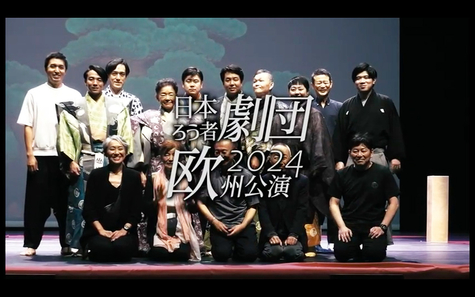
In Paris, the seamless harmony of Kyogen voices, sign language, and subtitles captivated the audience.
Can you tell us more about the charm of Kyogen, Japan's traditional performing art, and its unique expression through sign language?
Kuroyanagi: To answer that, let's hear from Mr. Chikanari Miyake, who's with us today. As the son of Kyogen Master Ukon, he has been a guiding force in Kyogen, and for the Paris performance, he provided his voice to bring it to life.
Miyake: Kyogen dialogue is often considered similar to modern Japanese, while Japanese sign language is a fully independent language. In Sign Language Kyogen, we're performing in two languages simultaneously--spoken Kyogen and expressive sign language. Even those who don't know sign language can grasp the meaning from the gestures. So in a way, Sign Language Kyogen is even easier to understand than traditional Kyogen.
Sign Language Kyogen beautifully blends the depth of traditional performing arts with the vibrant expressiveness of sign language. Were there any standout moments from the Paris performance that left a lasting impression?
Kuroyanagi: For the Paris performance, the Japan Cultural Institute in Paris(The Japan Foundation) graciously added subtitles, which I believe made the story even more engaging and easier to connect with.
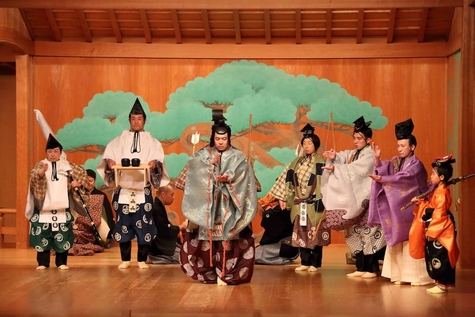
Miyake: We made sure we were meticulously prepared for this performance. We translated everything from Japanese Sign Language into International Sign. Our goal was to make the performance accessible to everyone, combining the voices of the Kyogen actors, the gestures of International Sign, and the subtitles. In fact, around the same time, there was a deaf festival in Reims, so many deaf people were attending that. Consequently, our Paris performance of Sign Language Kyogen had a large hearing audience. In the end, the use of three types of language led to an unprecedentedly positive response. The person in charge of the subtitles introduced by the Japan Cultural Institute in Paris(The Japan Foundation) well understood the nuances and timing of Kyogen, so the subtitles were synced perfectly with the performance. As the Kyogen actors delivered their lines and the performers signed them, the subtitles appeared at just the right moments, creating an incredibly memorable experience.
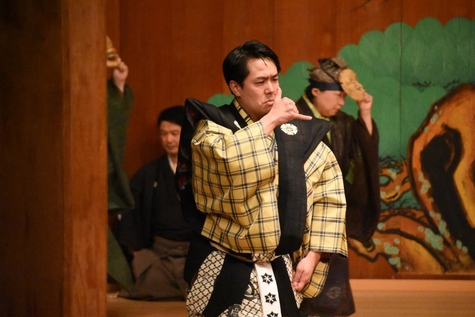
Sign language connects people across countries and languages.
You mentioned International Sign, but I understand that Japanese, American, and French Sign Languages each have their own unique expressions. Is that right?
Kuroyanagi: Exactly. For instance, in Japanese Sign Language, the gesture for "getting married" is to bring together the thumb, symbolizing a man, and the pinky, symbolizing a woman. In International Sign, however, the gesture mimics putting on a ring. At a theater festival held in Palermo, I observed different sign languages from around the world, and for the word "marriage," the gestures were surprisingly similar across in languages.
Do the differences in sign language across countries create challenges in communication?
Kuroyanagi: When the actors from America's National Theatre of the Deaf came to Japan, they told me, "Even though sign language is different around the world, we can grasp most everyday conversations within a week. After a month, we can discuss anything, even philosophy." They also said, "Despite the language differences, deaf people can understand one another." And in that moment I honestly thought, "If everyone could sign, people around the world could communicate effortlessly."
Sign language has the unique power to transcend both language and hearing boundaries, offering incredible potential for global communication. In your experience of theater in various countries, have you noticed anything in particular that stands out?
Kuroyanagi: Mr. Izaki, you've had the opportunity to see theater groups from all over the world during your international performances, haven't you?
Izaki: Having performed in various countries, I've viewed a wide range of theater groups. Each troupe has its own unique style--some stick to traditional performances, while others push the boundaries with fresh, innovative works. It's fascinating to see such diversity. I am proud that we've been able to bring Sign Language Kyogen to the world stage.
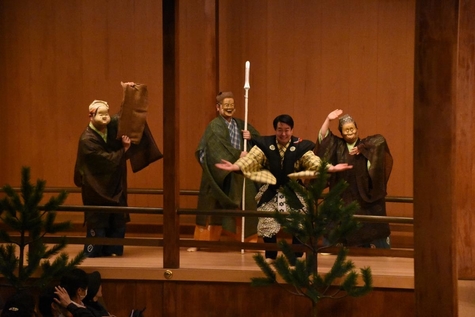
Sign Language Kyogen: A tradition passed from Kyogen performers to the deaf community and on to the next generation.
Could you please share your vision for the future.
Izaki: Since meeting Master Ukon, the Japanese Theatre of the Deaf has had the privilege of bringing many exciting new works to life, and it's been an incredibly rewarding journey. Traditional performing arts demand discipline, so we dedicated ourselves daily to its practice--allowing no half measures. Thanks to Master Ukon and Mr. Chikanari Miyake, who's here with us today, we've kept going strong for forty-two years without deaf performers becoming discouraged. Kyogen is full of incredible elements, and we're excited to keep pushing boundaries and taking on new challenges!
Kuroyanagi: Traditional performing arts can't flourish without great mentors, so I'm truly grateful that Master Ukon took on the role so willingly. Now, his sons are carrying on the tradition, which is remarkable. If there were a short modern play that would resonate well with deaf audiences, I'd love to take on the challenge of exploring new ways to bring it to life on stage!
Sign Language Kyogen is a perfect example of DEI in action--it brings together deaf and hearing audiences as well as people with different language backgrounds to enjoy the art of performing as one. Today's experience truly reinforced DEI's power and significance. Thank you all for your time!
[Stage Performance at the Japan Cultural Institute in Paris] Sign Language Kyogen:
"Uri Nusubito" (The melon thief) and "Niwa Tori Muko" (The rooster groom)--performed by the Japanese Theatre of the Deaf
*Venue: Japan Cultural Institute in Paris
*Program:
・Introduction to Sign Language Kyogen--presented by Chikanari Miyake and Satoshi
Ezoe (with French voice-over and International Sign interpretation)
・Sign Language Kyogen performances: "Uri Nusubito" (The melon thief) and "Niwa Tori Muko" (The rooster groom)
*Cast:Performed by the Japanese Theatre of the Deaf (Satoshi Ezoe, Atom Sunada, Mami Suzu, Yumiko Igarashi, Shohei Hasegawa, and Tomu Itsukaichi)
*Voice Performances: Miyake Kyogen Society (Sukenori Miyake, Chikanari Miyake, Hiroaki Kaneda, and Mitsuo Koizuka)
*Direction and Supervision: Ukon Miyake
*Planning and Production: Tetsuko Kuroyanagi
What is Sign Language Kyogen?
In 1982, Tetsuko Kuroyanagi, president of the Totto Foundation, envisioned a theater experience in which both deaf and hearing audiences could enjoy performances together. Since then, Sign Language Kyogen has captivated audiences in Japan and around the world.
Combining the expressive beauty of sign language with the power of traditional performing arts, this unique form of theater was recognized in 1987 as a groundbreaking new genre with an award from the Agency for Cultural Affairs National Arts Festival. Through intense training, deaf performers master the art of expressive storytelling, making Sign Language Kyogen widely praised as even more engaging and accessible than traditional Kyogen.
After more than forty years of performances, this trailblazing art form cemented its legacy in the world of Noh theater by earning the prestigious 31st Saika Award in 2021.
Profile
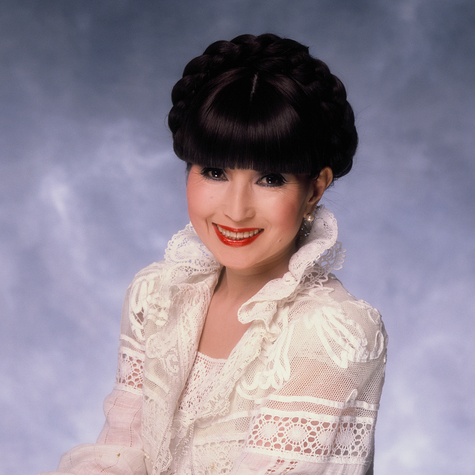
Tetsuko Kuroyanagi--Actress / UNICEF Goodwill Ambassador / President of the Totto Foundation
Born in Tokyo, Tetsuko Kuroyanagi studied at Tomoe Gakuen and St. Hilda's School before graduating from the vocal music department of the Tokyo College of Music. She then joined the NHK Broadcasting Theater Company, becoming NHK's first-ever exclusive TV actress.
She further honed her craft at the Bungakuza Theater Research Institute and the Mary Tarcai Acting School in New York. Kuroyanagi has appeared on numerous American TV programs, including The Tonight Show Starring Johnny Carson. She has also been featured in TIME, Newsweek, The New York Times, The Herald Tribune, and People as a prominent Japanese woman.
Her groundbreaking talk show, Tetsuko's Room, is now in its fiftieth year. Her book, Totto-chan: The Little Girl at the Window, set a Japanese best-seller record with eight million copies sold and has been translated into over twenty languages, including English, German, Russian, Chinese, and Arabic. Royalties from the Japanese edition funded the establishment of the Totto Foundation, which supports the training of professional deaf actors, theater productions, and sign-language education.
As a UNICEF Goodwill Ambassador, Kuroyanagi has traveled across Africa and Asia, using the media to raise awareness of and funds for children in need. She is also a member of the Japan PEN Club, the director of the Chihiro Art Museum (Tokyo and Azumino), vice chair of the Tokyo Philharmonic Orchestra, and honorary president of the Panda Protection Institute of Japan. She has been recognized as a Person of Cultural Merit for her outstanding contributions.
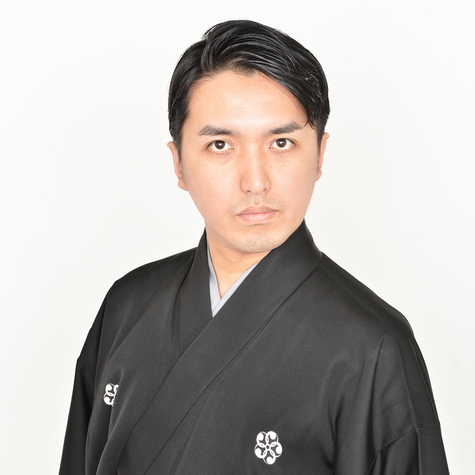
Chikanari Miyake--Izumi-ryu Kyogen Performer
Chikanari Miyake is an Izumi-ryu Kyogen performer, carrying on the esteemed legacy of his grandfather, Tokujiro Miyake the Ninth, a Living National Treasure, and his father, Ukon Miyake, a designated holder of the Important Intangible Cultural Property title.
He made his stage debut at the age of three in "Koji-dawara" and has since performed a wide repertoire of prestigious Kyogen pieces, including "Sanbaso," "Tsurigitsune," "Kanaoka," and "Hanago." In addition to performing in Noh theaters, he regularly appears in public performances across Japan and leads educational programs introducing Kyogen to students of all levels.
Beyond his work in traditional Kyogen, Miyake actively explores cross-genre collaborations, appearing in opera and contemporary theater while also producing innovative projects that merge Kyogen with Rakugo, paper-cutting performance art, and musicals.
A strong advocate for Sign Language Kyogen, he personally uses sign language to train actors at the Japanese Theatre of the Deaf. In 2014, he took on the lead role in "Hige Yagura" for the Sign Language Hatsuharu no Kai (New Year's Kyogen) performance, further demonstrating his commitment to making Kyogen accessible to all audiences.
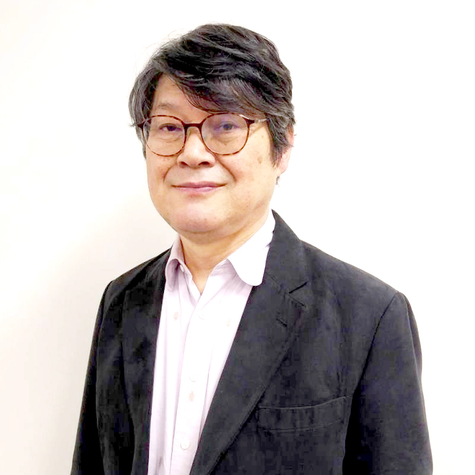
Tetsuya Izaki--Advisor, Japanese Theatre of the Deaf / Actor / Sign-Language Instructor / Special Advisor, Tokyo White Hands Chorus
Tetsuya Izaki, a native of Saga Prefecture, is a pioneering figure in deaf theater and sign-language education. He graduated from the National Education School for the Deaf, affiliated with Tokyo University of Education (now part of Tsukuba University), and began his artistic journey in 1979 by studying pantomime at the Tokyo Pantomime Institute. The following year, he played a key role in founding the Tokyo Deaf Theater Circle, renamed the Japanese Theatre of the Deaf in 1981.
In 1982, Izaki joined the American National Theatre of the Deaf, where he performed professionally for a year and a half before returning to Japan to further develop deaf theater. His expertise in sign-language education led to his appearing as an instructor on NHK Educational TV's Minna no Shuwa (Sign language for everyone) and supervising sign language for the 1983 film A Scene at the Sea and the 1995 Nippon TV drama Heaven's Coin. In 2009, he starred in the film From Hand to Hand.
Beyond acting, Izaki is deeply engaged in inclusive arts and education. He serves as a sign-language instructor for the White Hands Chorus, a program led by El Sistema Japan that promotes music accessibility for all. For a decade, he also tutored Crown Princess Akishino in sign language.
Izaki has contributed significantly to sign-language resources for children, overseeing publications such as The Sign Language Book (volumes 1 & 2) and More Friends Through Sign Language. His work extends to NHK's children's program Okaasan to Issho, where he supervised the sign language-interpretation for the classic song "Amefuri." In recognition of his lifelong contributions to the arts and deaf culture, Izaki was appointed Public Relations Ambassador of Kohoku Town, Saga Prefecture, in 2022.
Keywords
Back Issues
- 2025.6.24 Exclusive Interview:…
- 2025.5. 1 Ukrainian-Japanese I…
- 2024.11. 1 Placed together, we …
- 2024.5.24 The 50th Japan Found…
- 2024.5.24 The 50th Japan Found…
- 2024.5. 2 People-to-People Exc…
- 2024.2.19 Movie Theaters aroun…
- 2024.2.19 Movie Theaters aroun…
- 2023.4.24 The 49th Japan Found…
- 2022.10.24 Inner Diversity <2> …

